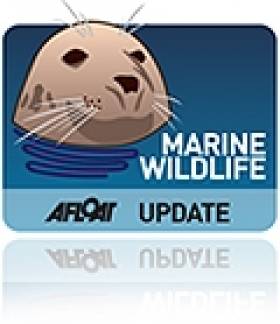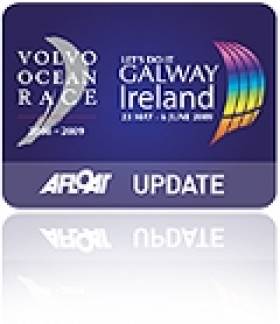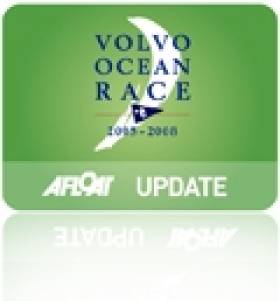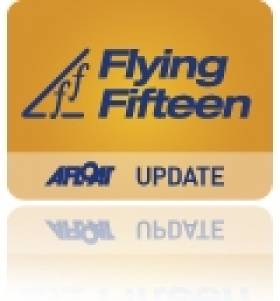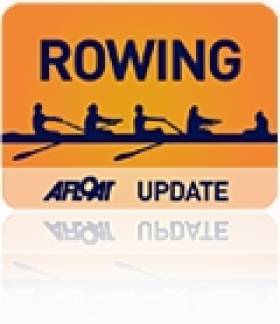Displaying items by tag: Ireland
Are Irish Boats Responsible for Welsh Sea Squirt Invasion?
#MARINE WILDLIFE - Colonies of the invasive Japanese sea squirt are posing a threat to mussels and scallops in north Wales - and Irish boats are to blame, according to the Daily Post.
The sea creature - which threatens shellfish by spreading like a blanket across the seabed and other surfaces - has been discovered in Holyhead marina, allegedly carried in on the hulls of boats from Ireland.
And fears are growing that if the marine pest spreads to the Menai Strait, the effect on the local shellfish industry could be "disastrous".
To combat the problem once and for all, the Countryside Council for Wales will spend £250,000 of Welsh government funding on an extermination project at the marina, using plastic bags to smother the sea squirts and setting up quarantine facilities for incoming vessels.
The project is expected to be completed by the end of the year.
Irish Contingent in Singapore for Canoe Marathon Worlds
An Irish contingent is in Singapore this weekend to compete at the 19th ICF Canoe Marathon World Championships.
In the women's K1, Jenny Egan - the Irish Times/Irish Sports Council Sportswoman of the Month in June this year - was set to face six laps of the 4.2km course with six portages in the women's K1.
Meanwhile, her brother Peter Egan - teaming today with Neil Fleming in men's K2 - is scheduled to face seven laps with seven portages.
Fleming and Richard Hendron were also set to take on the same course in the men's K1.
Live streaming of the weekend's competition, which concludes this evening, is available HERE.
VOR Skipper Cammas Receives French Sporting Honour
Volvo Ocean Race skipper Franck Cammas has been presented with one of France’s most prestigious sporting honours.
The man in charge of the Groupama sailing team was awarded the Grand Prix de l’Académie des Sports in Paris recently, recognising his achievements in sailing in 2010.
These included his skippering of the 100ft trimaran Groupama 3 non-stop around the world in a record-breaking in 48 days, 7 hours, 44 minutes and 52 seconds.
Cammas is only the fifth sailor to be presented with the award, following Whitbread Round the World Race skipper Eric Tabarly, 1983 America’s Cup winner John Bertrand, solo sailor Isabelle Autissier and Alinghi team principal Ernesto Bertarelli.
But Cammas isn't resting on his laurels, as he's currently preparing with his team to compete in the next Volvo Ocean Race kicking off next month.
He will lead a crew of 11 sailors - including Kerryman Damian Foxall - on the 70ft monohull Volvo Open 70 Groupama 4 in the 39,000 nautical mile race, which is set to conclude in Galway next summer and will also involve Wexford sailor Justin Slattery, who is in the crew for Team Abu Dhabi.
The action starts in Alicante, Spain on 29 October with the first in-port race. The first leg to Cape Town then begins on 5 November.
Green Dragon Backer Works His Magic for VOR in Abu Dhabi
Abu Dhabi's The National has an interview with David Hassett, commercial director of Abu Dhabi Ocean Racing and Irish yachting veteran, ahead of the city's hosting of the Volvo Ocean Race.
Hassett was instrumental in bringing the race to Galway in 2009, and was one of the team behind the Green Dragon, Ireland's underdog entry which took the yachting world by surprise by clinching three podium finishes.
This time round, Hassett is hoping to work similar magic for Abu Dhabi as it hosts a stopover of the next Volvo Ocean Race at the end of the year - and enters its own yacht in the competition, with at least one Emirati crewman on board.
As commercial director, 40-year-old Hassett - originally from Cork and a championship sailor in his youth - is responsible not only for raising funds, but making sure that his sponsors get the best return on their investment. And that means getting their race entry seen.
"It's my job to ensure that the billboard is effective," he says. "Everywhere the boat goes, the name Abu Dhabi goes and it becomes synonymous."
Top pritority for Hassett is marketing Abu Dhabi as a "winter watersports destination", and encourage more people in the region to get off their jet skis and into sailing.
The National has more on the story HERE.
Ireland Team Finish 16th at Canoe Slalom World Championships
Ireland finished 16th in the K1 men’s team event at the Canoe Slalom World Championships at Bratislava in Slovakia today. Germany were first in a time of 110.79, while Ireland, made up of Ciaran Heurteau, Patrick Hynes and Eoin Rheinisch, clocked 168.29. This included 52 seconds in penalties.
Canoe Slalom World Championships, Bratislava, Slovakia (Irish interest)Men’s K1 Semi-Final (First 10 to Final; first 15 countries qualify for London Olympics): 1 France (B Neveu) 94.40; 28 C Heurteau 104.99 (9.59 behind). Final: 1 Slovenia (P Kauzer) 96.01, 2 Poland (M Polaczyk) 97.22, 3 France (F Lefevre) 98.89.
Team Event - Men's K1: 1 Germany 110.79; 16 Ireland (C Heurteau, P Hynes, E Rheinisch) 168.29
Heurteau Keeps Irish Hopes Alive at Canoe Slalom World Championships
The top 15 nations on Sunday are guaranteed a place at the London Olympics.
Canoe Slalom World Championships, Bratislava, Slovakia (Irish interest)Men
K1 Heats (top 40 to Semi-Final): 1 Germany (A Grimm) 87.94; 38 C Heurteau 92.60 (2nd run), 54 E Rheinisch 94.65 (1st run), 80 P Hynes 105.45 (2nd run).
Women
K1 – Heats (top 30 to Semi-Final): 1 Spain (M Chourraut) 96.14 seconds; 61 A Conlon 120.39 (2nd run); 66 H Craig 158.15 (2nd run).
Killyleagh Pair Scoop Flying Fifteen East Coast Cup
Strangford Sailing Club's Brian McKee and Ian Smyth finished second after five races in Red Bay over Saturday and Sunday, while Roger Chamberlain and Jason Scammell-Maarch from Strangford Lough Yacht Club finished third, despite helm Roger receiving a knock to the head and retiring from the fourth race.

Eventual winners Andrew McCleary and Colin Dougan from Killyleagh Yacht Club (far right) lead off the line. Photo: Damian Connon
First in the Silver fleet was Tom Murphy and Andrew Marshall from Dun Laoghaire's National Yacht Club. The Bronze fleet was led by Philip and Anna Sanford, again from Strangford Sailing Club, while Bryan Willis and John McPeake from Whitehead's County Antrim Yacht Club were the leading boat in the Classic fleet.
In all 27 boats took part in the racing, which saw calm but overcast conditions on Saturday, and increasingly fresh breezes with gusts over 20 knots during Sunday's three races. Clubs participating in the championships included: Killyleagh Yacht Club, Strangford Sailing Club, Strangford Lough Yacht Club, the National Yacht Club, Portaferry Sailing Club, County Antrim Yacht Club in Whitehead, Larne's East Antrim Boat Club, Carrickfergus Sailing Club and Courtown Sailing Club in Wexford, as well as four local boats from Cushendall Sailing and Boating Club.
The first home of the locals were Rob Pelley and Marc Ritson. Paul Lowry and Brenda Reddington were next, followed by Eddie and Eoin Ritson. Paul McLaughlin and Michael McKinley, competing in a borrowed boat, were next over the line.
Ireland Rowers Miss Chance to Qualify Olympic Boat
Only the top two boats (places seven and eight overall) were guaranteed a place at London 2012. Germany won the race by leading virtually all the way and China took the second qualification spot by taking out the United States in the second 1,000 metres. Ireland were in touch at 500 metres but could not keep contact with the head of the field.
In the most dramatic race of the day, Germany lost the men's quadruple sculls gold to Australia virtually on the line when Lauritz Schoof missed a stroke as the Germans were leading. Britain won their first gold in an Olympic event through Anna Watkins and Katherine Grainger in the women's double, but New Zealand took the men's pair, leaving Britain in second, and the men's single scull, where Mahe Drysdale regained his crown. Coleraine's Alan Campbell took bronze.
World Rowing Championships, Bled, Slovenia – Day Seven (Selected Results)
Men
Pair – A Final: 1 New Zealand 6:14.77, 2 Britain 6:16.27, 3 Italy 6:21.33.
Quadruple Sculls – A Final: 1 Australia 5:39.31, 2 Germany 5:39.56, 3 Croatia 5:42.82.
Single Sculls – A Final: 1 New Zealand (M Drysdale) 6:39.56, 2 Czech Republic (O Synek) 6:40.05, 3 Britain (A Campbell) 6:44.86.
Women
Four – A Final: 1 United States 6:30.30, 2 Australia 6:31.18, 3 Netherlands 6:34.06.
Lightweight Quadruple Scull – A Final: 1 Britain 6:28.14, 2 China 6:30.41, 3 United States 6:33.91.
Double Scull – A Final: 1 Britain 6:44.73, 2 Australia 6:45.98, 3 New Zealand 6:46.74. B Final (Places 7 to 12; first two boats qualify for Olympic Games 2012): 1 Germany 6:57.43, 2 China 6:58.41, 3 United States 6:59.83, 4 Finland 7:04.51, 5 Serbia 7:05.75, 6 Ireland (L Dilleen, S Puspure) 7:13.92.
Adaptive
Legs, Trunk and Arms Mixed coxed Four – A/B Semi-Final (First Three to A/B Semi-Final; rest to B Final): 1 Germany 3:30.78, 2 Ireland (A-M McDaid, S Caffrey, S Ryan, K du Toit; cox: H Arbuthnot) 3:32.63, 3 United States 3:32.98; 4 China 3:35.66, 5 Italy 3:41.51, 6 Russia 3:45.79.
Ireland's Top Wreck Diving Sites
With the Lusitania expedition in the news, Saturday's Irish Times presents a guide to some of Ireland's most interesting diving sites for all levels of experience.
Though Ireland can boast an abundance of shipwreck sites, a number of them are off-limits to anyone but the hardiest expert explorers, while others require a licence from the Department of Hertiage.
But open dives are still plenty, such as the wreck of UC-42 off Roches Point in Cork, which happens to lie in a popular diving range, and the Empire Hertiage, which lies 30km off the coast of Malin Head and is regarded as one of Ireland's best wreck dives.
Among the licenced dives, the HMS Vanguard - which was tragically sunk 19km east of Bray by its sister ship Iron Duke in 1875 - is a top contender, with the summer months providing astounding visibility of the ship's 9in guns.
The Irish Times has more on the story HERE.
Ireland’s lightweight double scull of Siobhan McCrohan and Claire Lambe finished fifth in their heat at the World Rowing Championships in Bled in Slovenia today. Britain won the race and took the direct route to the A/B semi-final, while Ireland move on to a repechage.
The Ireland lightweight quadruple scull of Niall Kenny, Michael Maher, Justin Ryan and Mark O’Donovan finished second in their heat. Germany took the one qualification place on offer.
World Rowing Championships, Bled, Slovenia – Day Two (Irish interest)
Men – Lightweight Quadruple Scull – Heat One (First Directly to A Final: rest to Repechage); 1 Germany 5:59.98, 2 Ireland (N Kenny, M Maher, J Ryan, M O’Donovan) 6:03.05, 3 United States 6:08.81, 4 Armenia 7:03.70
Women – Lightweight Double Scull – Heat Three (First Directly to A/B Semi-Final): 1 Britain 7:02.03; 2 New Zealand 7:02.88, 3 Netherlands 7:07.47, 4 Sweden 7:10.96, 5 Ireland (S McCrohan, C Lambe) 7:16.14, 6 Czech Republic 7:39.70.
Adaptive – Legs, Trunk and Arms Mixed Coxed Four – Heat One (First Two Directly to A/B Semi-Final): 1 Britain 3:28.27, 2 Ireland (A-M McDaid, S Caffrey, S Ryan, K du Toit; cox: H Arbuthnot) 3:35.33; 3 Brazil 3:43.52, 4 Poland 3:49.13, 5 South Africa 4:03.41, 6 Belarus 4:24.31.


























